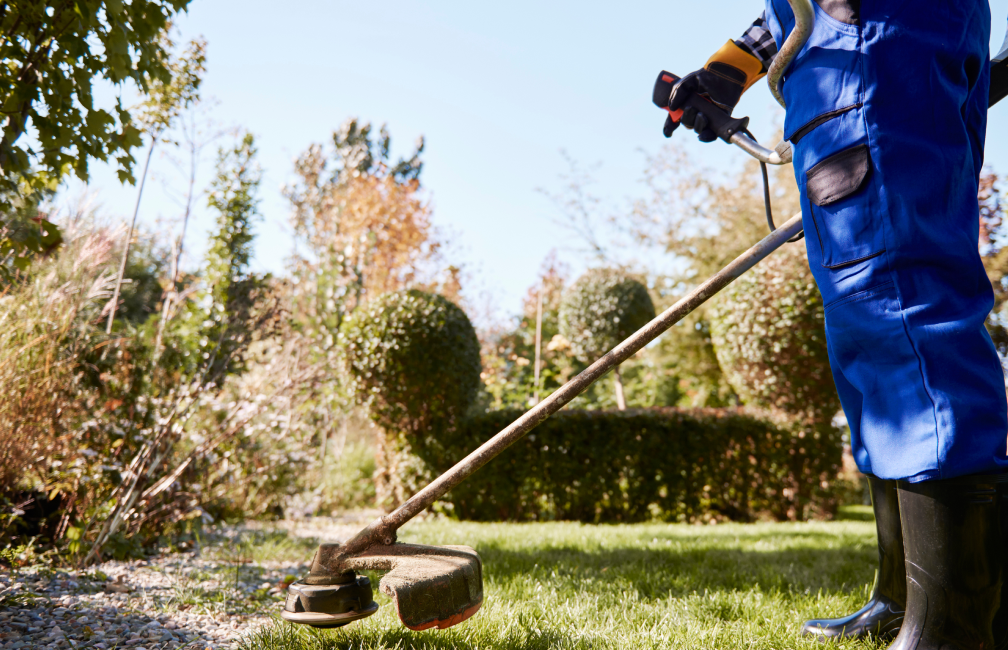
Belmont Lawn Aeration Services
Choose our expert lawn aeration services to ensure deeper root growth, improved soil health, and a greener, more resilient lawn that stands out in your neighborhood.
Get a Free QuoteWhen to Schedule Lawn Aeration in Belmont, MA – Seasonal Guide
In Belmont, MA, the best times to schedule lawn aeration are typically in early spring or early fall, when grass is actively growing and can recover quickly. Belmont’s climate features cold winters and warm, humid summers, so timing aeration to avoid extreme temperatures and maximize root development is essential. For neighborhoods near Clay Pit Pond or the shaded streets of Belmont Hill, soil compaction and shade coverage can impact the ideal aeration window.
Local environmental factors such as late spring frost dates, periods of summer drought, and the region’s mix of clay and loam soils all play a role in determining the right time for aeration. Homeowners should also consider municipal guidelines and resources available through the Town of Belmont when planning lawn care services.
Local Factors to Consider for Lawn Aeration in Belmont
- Tree density and shade coverage, especially in areas like Payson Park
- Soil type (clay or loam) and drainage characteristics
- Recent precipitation patterns and drought risk
- Terrain slope and risk of runoff
- Local frost dates and seasonal temperature shifts
- Municipal restrictions or recommendations on lawn care
Benefits of Lawn Aeration in Belmont

Improved Soil Health
Enhanced Grass Growth
Better Water Absorption
Reduced Soil Compaction
Increased Nutrient Uptake
Stronger, Greener Lawns

Belmont Lawn Aeration Types
Core Aeration
Spike Aeration
Liquid Aeration
Slicing Aeration
Manual Aeration
Plug Aeration
Rolling Aeration
Our Lawn Aeration Process
Site Evaluation
Preparation
Core Aeration
Cleanup
Post-Aeration Review
Why Choose Belmont Landscape Services

Belmont Homeowners Trust Us
Expert Lawn Maintenance
Reliable Scheduling
Competitive Pricing
Professional Team
Satisfaction Guarantee
Personalized Service
Contact Belmont's Department of Public Works for Soil Core Disposal & Aeration Debris Management
Proper disposal of soil plugs extracted during aeration procedures constitutes a vital component of environmentally responsible lawn maintenance throughout Belmont, Massachusetts. The town's Department of Public Works has developed comprehensive guidelines for organic yard waste handling that directly affect property owners managing post-aeration materials. Understanding these municipal protocols ensures regulatory compliance while fostering sustainable soil stewardship practices across this Middlesex County urban community recognized for its historic neighborhoods and proximity to metropolitan Boston.
Belmont Department of Public Works
455 Concord Avenue, Belmont, MA 02478
Phone: (617) 993-2690
Official Website: Department of Public Works
Town officials recommend allowing extracted plugs to naturally decompose on lawn surfaces, returning valuable organic matter and essential nutrients to the soil ecosystem. When collection becomes necessary due to substantial accumulation, property owners must utilize biodegradable paper containers exclusively, avoiding synthetic alternatives that violate Massachusetts General Law Chapter 111, Section 150A. Recommended approaches include permitting plugs to desiccate 48-72 hours before redistributing through standard mowing practices, staging collected materials away from storm drainage infrastructure and conservation zones, cleaning hard surfaces to prevent soil entry into catch basins, and coordinating with transfer station schedules for appropriate composting. This methodology proves especially beneficial for Belmont's urban soils that require organic supplementation to improve structure and counteract decades of compaction from intensive development activities.
Understanding Soil Compaction in Belmont's Urban Glacial Till and Metropolitan Fill Deposits
Belmont's complex geological composition encompasses glacial till formations extensively modified by urban development interspersed with engineered fill materials, creating challenging soil management conditions throughout this metropolitan Boston suburb. According to USDA Web Soil Survey documentation, predominant soil classifications include Urban land-Paxton complex and Urban land-Charlton complex in developed zones, with remnant Paxton and Woodbridge fine sandy loams on original glacial till areas, plus Canton and Charlton complexes on elevated knolls where natural conditions persist. Wetland areas along Clay Pit Pond, Fresh Pond Reservation borders, and tributary drainage systems feature organic Freetown and Scarboro series with modified hydrology from urban development.
The glacial till formations contain clay-enriched substrates that impede water movement and root expansion, conditions severely intensified by urban compaction from heavy pedestrian traffic, construction activities, utility installations, and decades of residential development pressure. Urban fill materials create additional complications through heterogeneous composition, variable drainage characteristics, and extreme inconsistency in physical properties, particularly in areas where historical land uses involved grading and filling operations. Metropolitan development patterns have created "concrete-like" compacted layers that resist standard maintenance approaches.
University of Massachusetts Extension Center for Agriculture, Food and the Environment
161 Holdsworth Way, Amherst, MA 01003
Phone: (413) 545-2766
Official Website: University of Massachusetts Extension
These circumstances produce persistent standing water following rainfall despite comprehensive storm drainage systems, extreme soil resistance indicating hardened compacted zones, severely declining turf quality despite urban irrigation systems and maintenance programs, and widespread moss colonization indicating poor soil structure and anaerobic conditions in high-traffic areas. Professional aeration becomes crucial when conventional maintenance cannot address these severe urban soil structural deficiencies, with glacial till areas typically requiring annual autumn applications using specialized heavy-duty equipment capable of penetrating extremely dense urban substrates.
Belmont Conservation Commission Guidelines for Core Aeration Near Protected Fresh Pond Watershed Areas
Environmental protection requirements substantially influence lawn aeration operations throughout Belmont, particularly adjacent to Clay Pit Pond, Fresh Pond Reservation borders, Winn Brook, Mill Brook, and protected wetland systems including areas within Rock Meadow and Habitat Wildlife Sanctuary that characterize this urban community's remaining natural areas. The Belmont Conservation Commission enforces stringent buffer zone restrictions prohibiting mechanical soil disturbance within 100 feet of certified wetland boundaries and 200 feet of perennial stream channels, as mandated by the Massachusetts Wetlands Protection Act.
Belmont Conservation Commission
455 Concord Avenue, Belmont, MA 02478
Phone: (617) 993-2720
Official Website: Conservation Commission
Property owners developing aeration strategies must obtain written approval when working within designated buffer zones or environmentally sensitive areas. The commission requires detailed site documentation showing wetland boundaries, proposed aeration locations, and comprehensive erosion prevention measures blocking soil displacement into protected water bodies. Timing limitations apply during wildlife reproduction periods, typically restricting mechanical operations between March 15 and August 31 to safeguard sensitive urban wildlife populations and aquatic ecosystems. Special coordination becomes necessary near Fresh Pond Reservation where Cambridge Water Department and Massachusetts Department of Conservation and Recreation maintain overlapping jurisdiction for this critical metropolitan water supply source.
Environmental compliance requires delineating all resource areas before operations commence, collecting excess plugs on slopes draining toward watershed areas, stabilizing all disturbed zones immediately with appropriate seed mixtures, and avoiding saturated conditions to prevent rutting and sediment transport into this vital metropolitan drinking water supply system.
Belmont's Implementation of Massachusetts Soil Health Regulations for Aeration Operations
Massachusetts soil health regulations establish comprehensive standards for mechanical soil management practices, including core aeration operations conducted throughout Belmont's intensive urban environment. These regulations require adherence to best management practices designed to protect groundwater quality and prevent soil erosion during aeration activities, while supporting municipal environmental protection objectives in this highly developed community where soil management directly impacts both residential landscapes and regional water quality systems.
Massachusetts Department of Environmental Protection
One Winter Street, Boston, MA 02108
Phone: (617) 292-5500
Official Website: Massachusetts Department of Environmental Protection
Massachusetts Department of Agricultural Resources
251 Causeway Street, Suite 500, Boston, MA 02114
Phone: (617) 626-1700
Official Website: Massachusetts Department of Agricultural Resources
Implementation emphasizes timing restrictions, equipment specifications, and post-aeration stabilization requirements ensuring environmental protection while supporting effective urban soil management. Operations must avoid frozen or waterlogged conditions, utilizing specialized heavy-duty equipment that extracts clean cores 2-3 inches deep on till soils with multiple passes in severely compacted zones. Primary benefits include enhanced water penetration through compacted urban surfaces, improved organic matter incorporation in nutrient-depleted metropolitan soils, reduced surface runoff and improved stormwater infiltration capacity, and support for sustainable urban forest establishment in challenging metropolitan growing conditions where space limitations and infrastructure constraints create unique challenges.
Post-Aeration Stormwater Management in Compliance with Belmont's MS4 Program
Belmont's Municipal Separate Storm Sewer System (MS4) program establishes specific requirements for managing stormwater runoff following lawn aeration activities, particularly in densely developed areas where soil disturbance could contribute to water quality degradation in the Fresh Pond watershed and regional drainage systems flowing toward the Charles River. The program aligns with federal Clean Water Act mandates while addressing local watershed protection priorities for metropolitan water supply protection and urban stormwater management.
U.S. Environmental Protection Agency, Region 1
5 Post Office Square, Boston, MA 02109
Phone: (617) 918-1111
Official Website: U.S. Environmental Protection Agency, Region 1
Post-aeration stormwater management requires immediate stabilization of disturbed soil surfaces through overseeding, mulching, or temporary erosion control measures. Property owners must prevent soil particles from entering storm drainage systems during the critical establishment period following aeration, particularly important in urban areas where runoff directly impacts regional water quality and metropolitan infrastructure capacity. The EPA NPDES permit system governs municipal compliance while providing enforcement mechanisms for addressing violations. Weather monitoring becomes essential, with contractors postponing operations during predicted rainfall events using National Weather Service Boston forecasting data to prevent sediment transport and protect critical water supply infrastructure.
What Neighborhoods Do We Serve Throughout Belmont, MA?
Our comprehensive expertise encompasses Belmont's distinctive urban neighborhoods, each presenting specialized soil management challenges requiring expert local knowledge based on development history and metropolitan characteristics.
Belmont Center & Historic Cushing Square District: Surrounding the historic town center and Leonard Street commercial corridor, this region encompasses properties with extremely compacted Urban land-Paxton complexes from over a century of intensive commercial and pedestrian activity. Properties near the downtown core experience severe compaction from heavy foot traffic and extensive utility installations beneath established hardscapes, requiring annual deep-core aeration with specialized heavy-duty equipment capable of penetrating concrete-like urban substrates while carefully avoiding complex underground infrastructure networks.
Belmont Hill & Wellington Hill Prestigious Heights: These elevated residential areas feature properties with natural Paxton and Woodbridge soils on original glacial till formations, complicated by steep topography and mature estate landscaping. Properties often experience compaction from construction activities and landscape maintenance combined with significant root competition from established specimen trees, requiring annual autumn aeration focusing on improving water infiltration and incorporating organic matter while preserving historic landscape architecture and managing challenging slope conditions.
Fresh Pond Reservation Border & Watershed Interface: Properties adjacent to this critical metropolitan water supply encompass mixed glacial deposits with extreme environmental sensitivity and multiple jurisdiction oversight. Aeration requires strict conservation commission approval and specialized low-impact techniques focusing on drainage improvement while preventing any soil displacement toward this vital drinking water source, often involving coordination with Cambridge Water Department and state environmental agencies.
Clay Pit Pond & Rock Meadow Conservation Districts: Properties surrounding these significant urban conservation areas feature varied glacial deposits with seasonal water table fluctuations and recreational usage impacts. Proximity to these important urban green spaces necessitates careful conservation commission coordination, with aeration strategies emphasizing improved subsurface drainage while preventing impact to sensitive pond ecosystems through meticulous timing and comprehensive buffer zone compliance.
Waverley Square & MBTA Commuter Rail Corridor: This transportation hub features properties on extensively modified urban soils with underlying glacial till formations subject to vibration and infrastructure impacts. Properties experience chronic compaction from transit operations and commercial activities, requiring specialized aeration approaches that address both transportation-related stress and establishment of sustainable turf in challenging urban transit corridor conditions.
Pleasant Street & Trapelo Road Residential Corridors: These established suburban streets feature properties with modified Charlton and Canton soils over glacial till, complicated by mature street trees and aging infrastructure. Properties often require specialized aeration approaches that preserve neighborhood character while addressing compaction from decades of utility work and root competition from established maple and oak street trees.
Belmont Municipal Bylaws for Core Aeration Equipment Operation & Noise Control
Municipal noise ordinances significantly impact lawn aeration service scheduling throughout Belmont, with specific regulations governing equipment operation hours and sound level limitations in residential areas. Town bylaws typically restrict mechanical lawn care activities to weekday hours between 7:00 AM and 6:00 PM, with weekend operations limited to 8:00 AM through 5:00 PM to minimize neighborhood disturbances in this densely populated urban community where noise impacts affect numerous adjacent properties and multi-family housing developments.
Belmont Building Department
455 Concord Avenue, Belmont, MA 02478
Phone: (617) 993-2720
Official Website: Building Department
Belmont Health Department
455 Concord Avenue, Belmont, MA 02478
Phone: (617) 993-2710
Official Website: Health Department
Equipment specifications require compliance with EPA emission standards and Massachusetts noise pollution regulations, particularly near schools, healthcare facilities, multi-family housing, and dense residential areas throughout the community. Professional contractors must maintain current licensing and insurance documentation while demonstrating competency in local regulatory requirements governing urban soil management activities. Best practices include scheduling autumn aeration as optimal timing with spring applications when soil conditions permit, coordinating with parking restrictions and street cleaning schedules that affect equipment access in narrow urban streets, using compact equipment suitable for constrained urban lots and restricted access conditions, marking all utilities before operations begin using Dig Safe protocols, providing immediate post-aeration care through urban-appropriate seed mixtures and organic matter amendments designed for challenging metropolitan growing conditions, and timing operations to avoid peak commuter periods when traffic congestion could interfere with equipment access and increase neighborhood disruption in this busy metropolitan suburb.